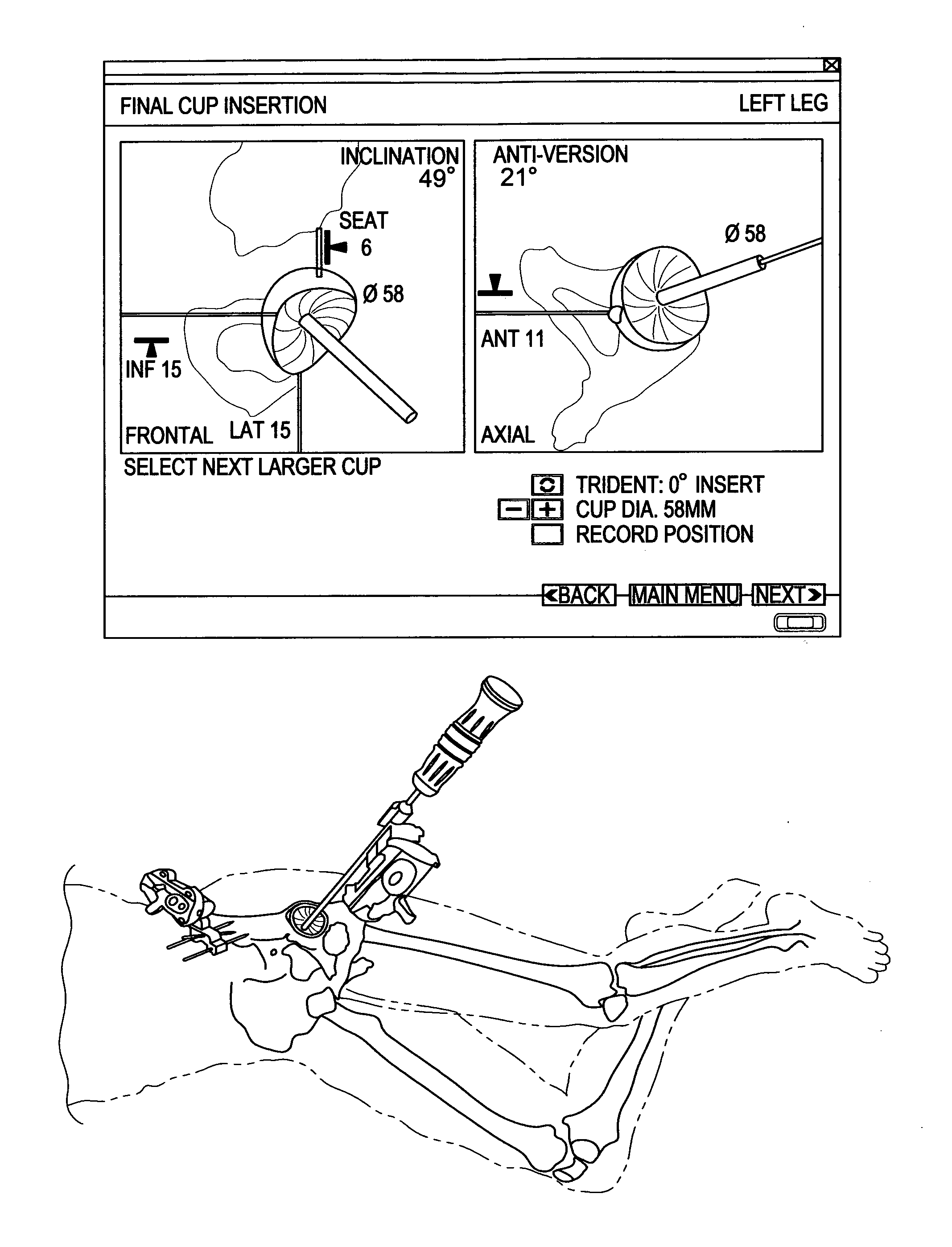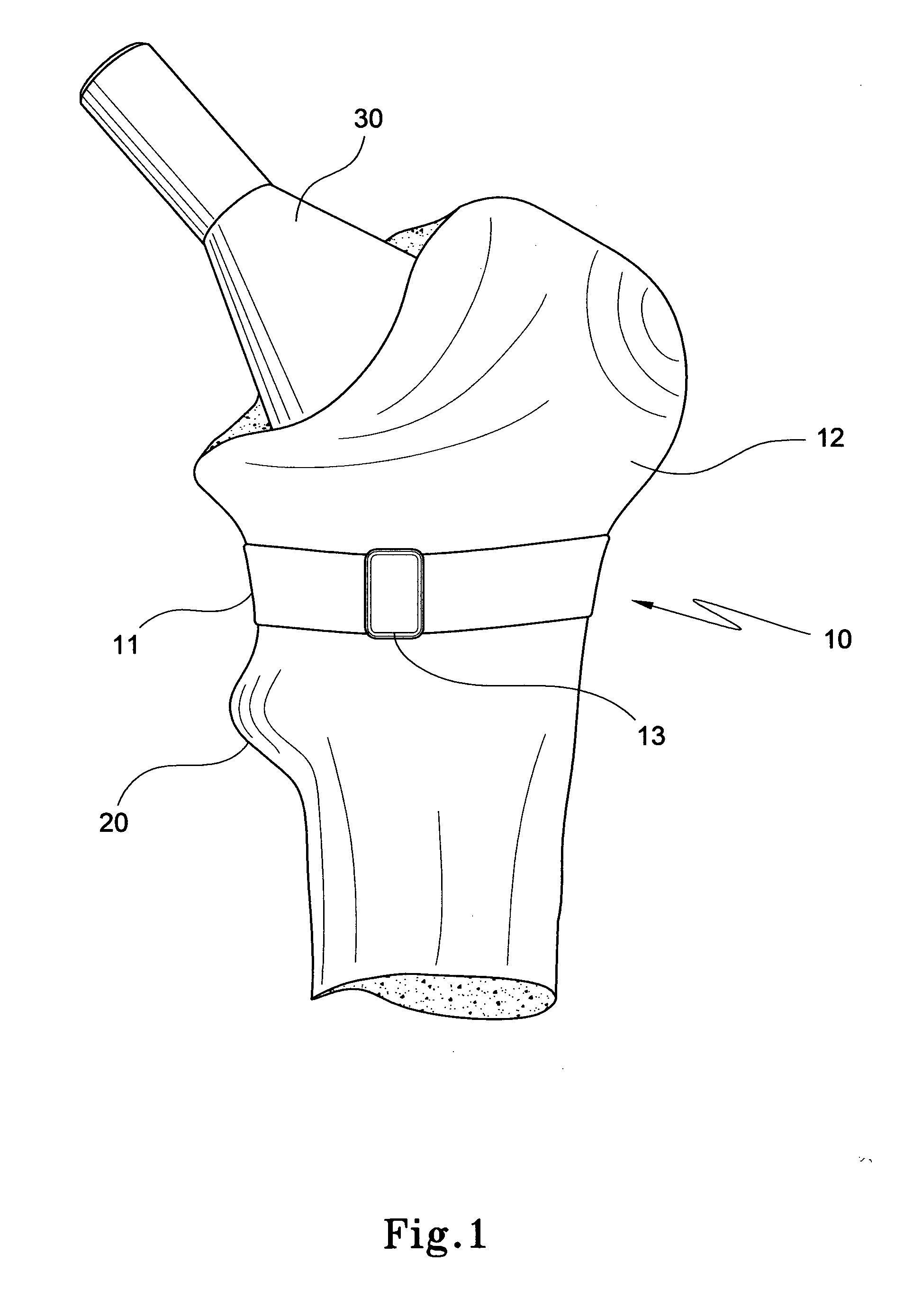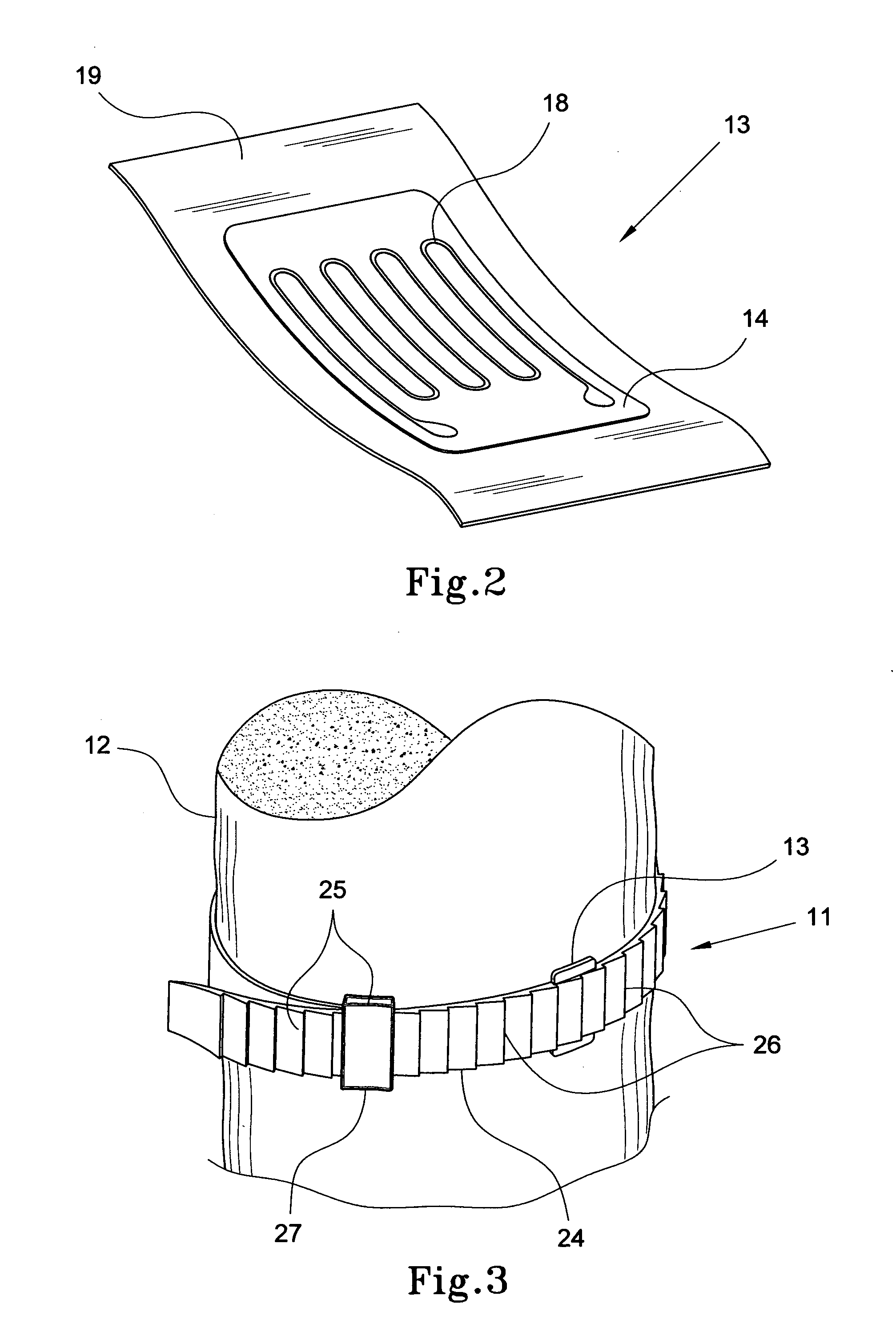Orthopaedic Safety System
a safety system and orthopaedic technology, applied in the field of orthopaedic safety system, can solve the problems of excessive bone strength, intraoperative morbidity, hoop stress in the bone, etc., and achieve the effects of improving signal-to-noise ratio, increasing measurement resolution, and increasing the error rate of the sensor member
- Summary
- Abstract
- Description
- Claims
- Application Information
AI Technical Summary
Benefits of technology
Problems solved by technology
Method used
Image
Examples
example 1
[0179](i) Co-ordinates of several landmarks are used to construct femoral and acetabular reference frames which are then exported as text files.
(ii) Co-ordinates of a tool tracker in the relevant reference frame (femoral or acetabular) are exported with associated time values, e.g
[0180]At t=t1, the tool tracker will be at co-ordinates; (x1, y1, z1).
[0181]Then t=t2 the tool tracker will be at co-ordinates (x2, y2, z2).
(iii) Data processing, the time based positions of the tool tracker are processed relative to the reference frames.
(iv) The relative velocity and relative acceleration of the components can be calculated. With the time based co-ordinates of the tool tracker and the relevant geometry of the component / implant obtained this enables a reconstruction of the relevant geometry of the prosthetic components, or a segment of the component that is of interest, for example the apex of the cup or the distal tip of the stem.
(v) The processed data is further processed comparatively ag...
PUM
 Login to View More
Login to View More Abstract
Description
Claims
Application Information
 Login to View More
Login to View More - R&D
- Intellectual Property
- Life Sciences
- Materials
- Tech Scout
- Unparalleled Data Quality
- Higher Quality Content
- 60% Fewer Hallucinations
Browse by: Latest US Patents, China's latest patents, Technical Efficacy Thesaurus, Application Domain, Technology Topic, Popular Technical Reports.
© 2025 PatSnap. All rights reserved.Legal|Privacy policy|Modern Slavery Act Transparency Statement|Sitemap|About US| Contact US: help@patsnap.com



